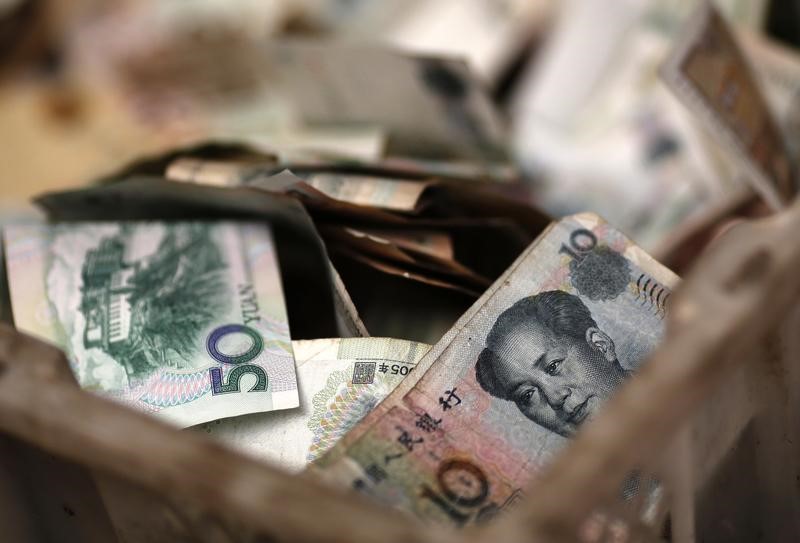 © Reuters.
© Reuters.
Investing.com--Most Asian currencies rose slightly on Tuesday, tracking some weakness in the dollar amid uncertainty over upcoming U.S. inflation data and a Federal Reserve decision on interest rates.
The Chinese yuan was the sole outlier for the day, falling 0.2% to an over six-month low after the People’s Bank of China trimmed a short-term lending rate, its first such move in 10 months.
The rate-sensitive South Korean won was the best performer in the region, up 0.5%, while the Japanese yen added 0.1% ahead of a Bank of Japan meeting this week.
Dollar creeps lower before slew of cues
The dollar weakened in Asian trade, coming further off recent two-month highs as markets awaited more cues from consumer price index inflation data on Tuesday and a Fed meeting on Wednesday.
The dollar index and dollar index futures fell about 0.1% each.
CPI data due later in the day is expected to show that U.S. inflation grew at a slower pace in May than the prior month. But the reading is still expected to be twice as much as the Fed’s annual target range of 2%.
The inflation reading is also widely expected to factor into the Fed’s decision on interest rates at the conclusion of a two-day meeting on Wednesday. While the central bank is expected to hold rates steady, markets remained on edge over any hawkish surprises.
Still, with U.S. rates set to remain higher for longer this year, Asian currencies are expected to remain under pressure.
Weak inflation readings in Asia also weighed on some currencies. The Indian rupee fell 0.1% after data on Monday showed consumer inflation fell more than expected in May.
Chinese yuan lags after rate cut
The Chinese yuan fell to 7.1694 against the dollar, hitting a new six-month low as a rate cut by the PBOC further weakened the appeal of the currency.
The PBOC cut its seven-day reverse repo rate by 10 basis points to 1.90% from 2.00%, its first such rate cut after the bank trimmed its Loan Prime Rate in August.
Markets have been positioning for a Chinese rate cut in recent weeks as data showed that a post-COVID economic recovery in the country rand dry.
Several Chinese state-owned banks also began cutting their rates on yuan deposits, heralding a broader, benchmark rate cut by the PBOC in the coming weeks.
Pessimism over China held back gains in currencies exposed to the country. Australia’s dollar was flat on Tuesday, also coming under pressure from a weak consumer sentiment reading.

